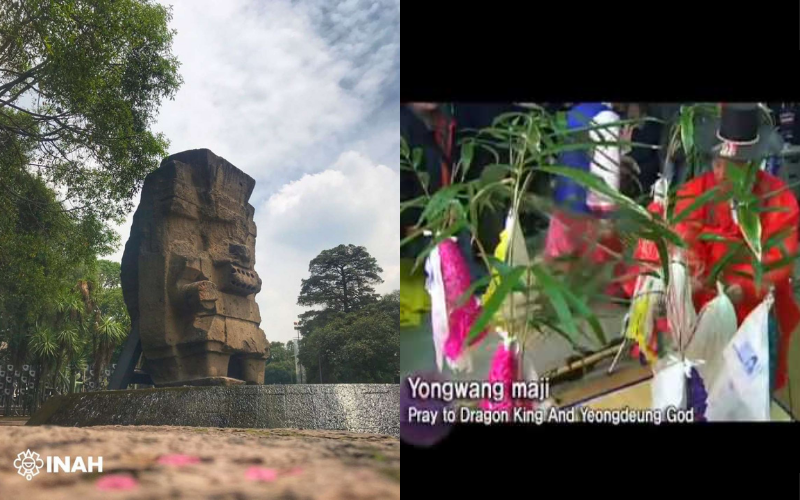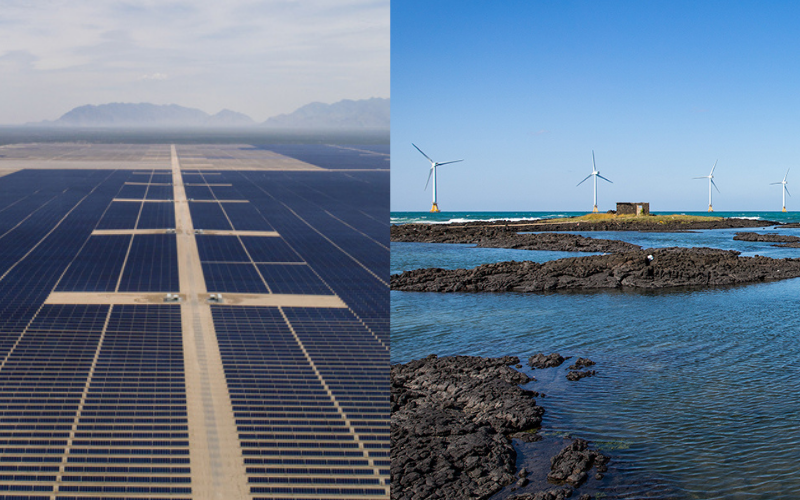In the framework of the Earth Day celebration (April 22nd) and as we are getting closer to 2030, the year of completion of the 2030 Agenda established by the United Nations Organization (UNO) with a series of Sustainable Development Goals (SDGs) to fight and eradicate various social, economic and environmental issues. As a Renewable Energy Engineer, I wanted to show how my country and Korea are working on solving these problems, what we can learn from each other and how does future look like for both countries, starting from their own culture and social roots.
Both countries see nature from a respectful and harmonical point of view. While, Mexico’s ideology is based on prehispanic cultures, such as Mayan and Mexican, on the other side, Korea has a strong influence of Confucianism and shamanism about their perspective. They both have their own gods and spirits that live among nature. For Mexico, a great example is “Tláloc” or “Chaac”, the god of rain, meanwhile for Korea, they reflect on certain mythology in which some spirits and gods like “Hwan-In”, the god of cosmos, appear to explain the origin of earth. (INAH) This helped, in some way, to shape both cultures with their current vision of the environment, seeing it not only as a resource to exploit, but also as some entity to live in balance with, which is still visible nowadays on indigenous cultures, in the case of Mexico, and in some places of Korea, like Jeju Island, where people held rituals like Yeongdeung-gut (영등굿) to show gratitude and respect to the spirits of the sea. (INAH; UNESCO)

Personally, I think these are very positive perspectives for today’s context about sustainability, but how are both countries currently working to protect their natural resources and environment? They are both part of the 2030 Agenda and, of course, these countries differ a lot in terms of population and land but, as it may not appear, they also share a similar position speaking about energy. About 60% of the electricity generation of both countries comes from fossil fuels and, though Korea has less than a half the population of Mexico, they still have a considerable amount of energy consumption, due to its high use of technology, with an electrification (use of electricity) percentage of 57.42%. However, despite Korea’s territorial limitation, it has given more support to renewables and low-carbon technologies, like solar, offshore and nuclear, through the implementation of diverse policies, achieving almost a 40% of their energy generation, in comparison to Mexico that has a 25.21%. (LowCarbonData)

Wind farm at Sinchang Windmill Coastal Road in Jeju (Right) | Sources: Secretaría de Energía (SENER), VisitJeju.net.
I find very inspiring all the efforts that Korea has made against climate change, combining research, technology and social awareness about this important topic, and one of which is also the International Maritime Defense Industry Exhibition (MADEX). This event, organized by South Korea's Navy and Marine Corps, that is being held at Busan this year from May 28 to 31, aims to present advancements in marine defense technology, gathering international government agencies and industries, by integrating innovation and technology, through different exhibitions and conferences that reflect Korea’s commitment to its future challenges involving sustainable development. (MADEX)

Conclusion
It is very important to know from where we come from to know what we can do next, and I think that we can learn a lot from Korea’s vision and initiative for ensuring a more sustainable future for its society. Despite having a great renewable energy resource potential in Mexico, we’re still working on integrating this kind of technology in our country, but I believe that with this kind of alliances and participation with other countries like Korea, we can reach to the same goal that is protecting our planet.
How about this article?
- Like1
- Support0
- Amazing0
- Sad0
- Curious0
- Insightful0


